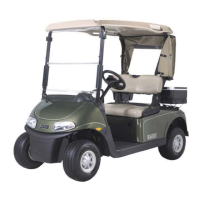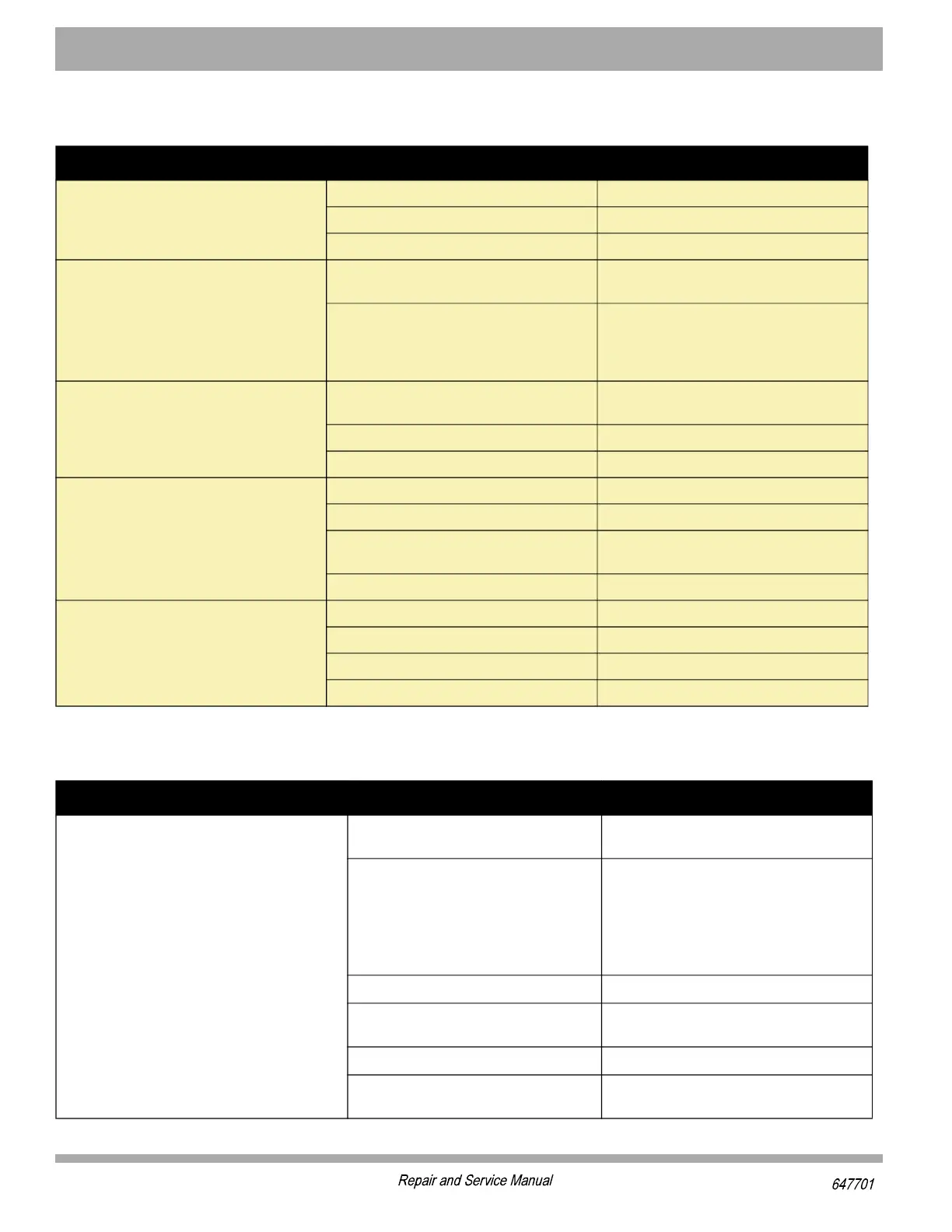136
FAULT TESTING
Read all of SAFETY and this section before attempting any procedure. Pay particular attention to Notices, Cautions, Warnings and Dangers.
SUSPENSION AND STEERING
BRAKE SYSTEM
Condition Possible Cause Correction
UNEVEN TIRE WEAR
Incorrect tire pressure Inflate to recommended pressure
Improper alignment (Incorrect toe in) Align front tires
Damaged or worn components Replace
STIFF STEERING
Rusted or contaminated king pin sleeve or
bushings
Replace or clean
Bent rack Remove rack and place on flat surface with
rack teeth up; If a .015" (.381 mm) feeler
gauge will pass under the rack, the rack
must be replaced
PLAY IN STEERING
Steering wheel loose Inspect splines - replace steering wheel if
required; tighten steering wheel nut
Steering components worn Replace
Loose wheel bearings Adjust or replace
VIBRATION
Steering components worn Replace
Loose wheel bearings Adjust or replace
Out of round tires, wheels, or brake
drums
Inspect and replace if out of round
Loose lug nuts Tighten to 50 - 85 ft. lbs. (68 - 115 Nm)
STEERING PULLS TO ONE SIDE
Incorrect tire pressure Inflate to recommended pressure
Dragging wheel brakes Service brake system
Suspension component failure Repair
Alignment incorrect Align
Condition Possible Cause Correction
FAILS BRAKE PERFORMANCE TEST
BY STOPPING IN A LONGER
DISTANCE THAN NORMAL
Wheel brake failure due to severely
worn or damaged components
Replace all severely worn or damaged
components
Brake pedal not returning
Brake not adjusting
Check for binding of brake pedal, if neces-
sary adjust/replace the brake pedal
Check/adjust for brake pedal free travel
Check/replace brake cables
Check/replace brake adjusters
Check/replace pedal pivot
Brake shoes wet Check and make sure brake shoes are dry
Brake cables damaged or sticky Check brake cable and replace if sticky or
damaged
Brake shoes severely worn Replace
Brake shoes glazed Sand shoes with emery cloth provided that
shoes have .06" (1.5 mm) min. material

